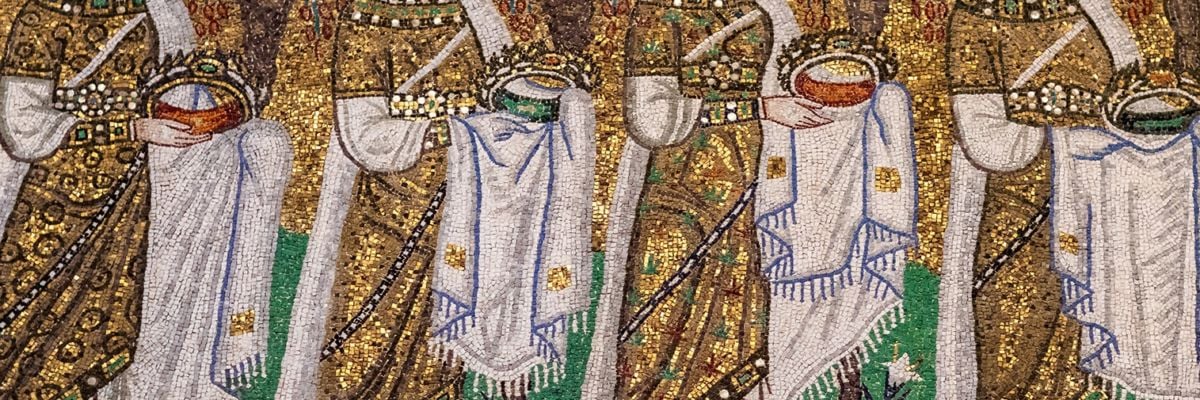
In this engaging clip, Cy Kellett talks with Catholic apologist Jimmy Akin about the historical and biblical case for women deacons in the Church. Jimmy highlights the role of Phoebe, a deaconess mentioned in the New Testament, and he describes what the word deaconess really means in its biblical context.
Transcript:
Caller: Is there any strong case, theological, biblical, and or historical for women deacons? It seems there isn’t any case. But as it gets brought up so often, what could be a strong case for it?
Jimmy: So it depends on what you mean. Now, we know that there were women in the early church who were called deaconesses. This is clear from the New Testament itself. If you look in Romans 16:1, Paul says, “I commend to you our sister Phoebe.” And by saying “I commend her to you,” that signals she’s the letter carrier. She’s the one. Because they didn’t have a postal service in the ancient world. Actually, they did, but it was, like, for the Roman Empire, and it was just used by government officials and stuff. So if you’re an ordinary person, you couldn’t just take a letter down to the post office and mail it, because there was no public post office. What you did is you either typically gave the letter to someone who was traveling wherever you wanted the letter to go. And you might, if you were rich and had slaves to do stuff for you, you might send a slave to carry the letter to whoever you wanted it to go to. But most people were not that wealthy, and so they would give the letter to a traveler who was already headed in that direction.
And so Phoebe is the letter carrier for Romans. But that’s not all that Paul says about Phoebe. He says that she’s a deaconess of the church at Cenchrea, which was the port city for Corinth. And so she’s called a deaconess, and it’s the feminine form of the word diakonos. So we know that there were women who were called deaconesses in New Testament times themselves.
Now, that doesn’t necessarily amount to what we would think of as a woman deacon, because the terms for these different offices were flexible in this period, and they weren’t yet all terms of… They weren’t all yet titles. Like the term for a priest that we get priests from, presbyteros, originally just meant “old man,” you know, an elder. And it became a title for an office in the church.
Well, in the same way, the word diakonos means “servant.” And so some translations, like the English Standard Version, will actually translate Romans 16:1 as “Phoebe, a servant of the church at Cenchrea.” And you might think, “Oh, well, that solves the problem.” Except, wait, what kind of servant is she? You know? And so just like you could translate any of the male deacons that get referred to, you could translate that “servant,” too. And, well, they are servants of a church, but that doesn’t tell us what kind of servants they are.
And if there was a regular ongoing class of female servants in churches, you can call them deaconesses. And that’s what we find in the early church; there were women. This wasn’t just Phoebe, who was like a one-off church servant. There were a bunch of women who were called deaconesses. We know that because they’re mentioned in the canons that were issued by the First Council of Nicaea in 325.
The Council of Nicaea is famous for infallibly defining the divinity of Christ and writing most of the Nicene Creed that we say on Sunday. The last end bit of it, that deals with the divinity of the Holy Spirit, was written by another council, but it wrote most of the Nicene Creed. What it’s less famous for doing is issuing at least 20 canons or rules for governing various things happening in churches. Among others, the date of Easter was one that the Council of Nicaea dealt with. But they also mention women deacons.
And what they say, though, is they’re not ordained the way men are. And so we have evidence of individuals who were called deaconesses in the early church. And they did things like catechize women and perform female baptisms. One reason you might want a woman to do that is oftentimes baptism was done naked in the early church. And you might not want a man naked baptizing a naked woman. So you might want a woman to do that baptism.
But we do have some evidence indicating that they were not ordained the way men were. So there was a distinction, according to some of our documents, between deaconesses and deacons. They did not both share in the Sacrament of Holy Orders.
On the other hand, there are some complexities to all this, because it’s only been recently that the Magisterium has begun treating deacons themselves as definite sharers in the Sacrament of Holy Orders. There were various so-called minor orders like lector and acolyte and things like that that did receive orders, but it was understood to be a non-sacramental version of orders. And the question was, well, what about deacons? Where are they? Are they priests and bishops? They definitely had the sacrament. But where did deacons go? Did they have the sacrament or were they like the minor orders that didn’t have the sacrament?
And it’s only been recently that the Magisterium has said, okay, they definitely have the sacrament. Even that, though, that’s not an infallible teaching. And so it’s still debatable, but it’s something that the Church is not presently pursuing. It’s treating deacons as if they have the sacrament.
And so the question then becomes, what about the deaconesses? Could we revive that and should we give them the sacrament? If so, well, we’ve got lots of women working in churches now, and if you wanted to just give them the title deaconess because they’re performing service in the church, whether they’re, you know, an education director or an OCIA director or whatever they’re doing, they’re performing service to the church.
And so you could call them servants, you could give them the title diakonos without really changing anything other than the title, but that wouldn’t result in them having holy orders, assuming that deacons have holy orders. Well, or the sacrament, I should say.
There are individuals who argue that even though some texts distinguish women deacons from male deacons in terms of how they were ordained, there are other texts they claim that don’t. That would imply that there were women who were ordained the same way men were. And I have some books written by such people. I haven’t read them all yet, but I got them because I want to understand the arguments that they make.
The standard opinion, however, has been that they were not ordained in the way men were. And so that’s a basic sketch of the issue. But if you want a strongman or steel man version of the argument, I would say get some of the literature by advocates of women deacons like I have and go through it and see what arguments they muster for there being a more robust female diaconate than the common opinion is.
Cy: Thank you very much for that question. You know, it’s funny, we have not had many questions on women deacons, and that’s certainly a question in the church these days, so it’s nice to be able to get that question.



